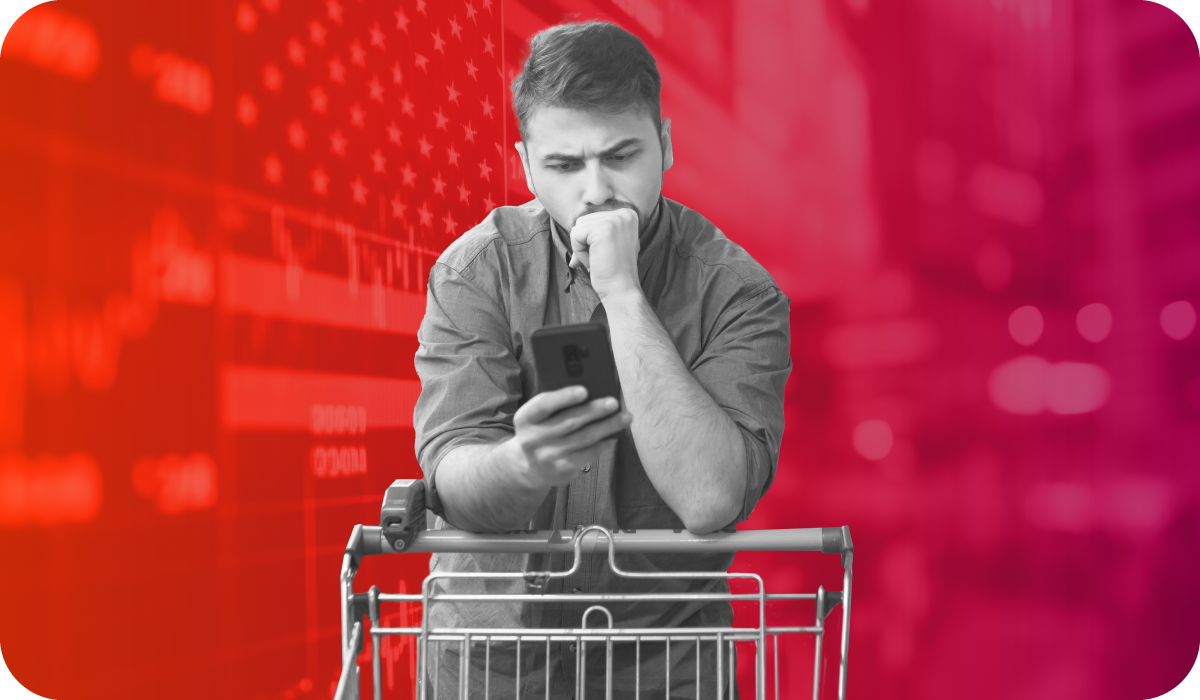Private label’s moment: how inflation and tariffs are reshaping consumer choices
Industry Trends • Mar 18, 2025 10:00:00 AM • Written by: Kate Bunton

Private label brands are on fire right now. Even as inflation cools, U.S. consumers continue to gravitate toward store brands, not just because of price, but because of shifting perceptions of quality, taste, and innovation. Meanwhile, ongoing tariff discussions threaten to raise costs on key consumer packaged goods (CPG) categories, pushing both retailers and national brands to rethink their strategies.
For retailers, this is a golden opportunity to double down on private label. But for legacy CPG brands, it’s time to rethink how to stay relevant in an era where consumers are proving more willing than ever to swap out name brands for store brands.
The inflation and tariff effect on private label
Inflation has been the obvious catalyst for private label growth, with rising prices forcing consumers to seek more cost-effective alternatives.
According to the Private Label Manufacturers Association, private label sales in the U.S. hit $271 billion last year, with unit sales continuing to outpace CPG. And the coming months are signaling more to come.
A new wave of tariffs is set to reshape the competitive landscape even further. A 20% tax on goods from China went into effect on March 4, and additional tariffs on Canada and Mexico have left food and beverage companies scrambling. In an article from Food Dive, major players like General Mills, Tyson Foods, and Coca-Cola are already warning about price increases and supply chain challenges. While some CEOs, like Jeffrey Harmening of General Mills, claim tariffs won’t have a “meaningful” impact, others are sounding alarms. Campbell’s CEO Mick Beekhuizen noted that tariffs could raise packaging costs for its soups, and Mondelēz predicts higher costs for cookies and crackers produced in Canada and Mexico.
There are more concerns around retaliatory actions, as well. Canada has already suspended imports from a Smithfield pork processing plant, and U.S. whiskey brands like Jack Daniel’s are being removed from shelves in key international markets. Tariffs on agricultural goods, including beef, pork, and soybeans, threaten to disrupt supply chains and raise costs for both national brands and private label manufacturers alike.
For CPG brands, navigating this environment will require more than just price adjustments. Mondelēz, for example, is turning to increased promotions and marketing to offset cost hikes, while Coca-Cola is considering switching to lighter-weight cans or more plastic bottles. These strategies highlight the need for agility in a marketplace where trade policies can shift overnight.
Retailers, however, have a clear path forward. Historically, price increases drive consumers toward private label options. It’s a trend we’ve seen accelerate over the past few years. Retailers like Target and Walmart are investing in innovation, premiumization, and even chef collaborations to make their private label brands more appealing. This shift is changing the competitive landscape and forcing legacy brands to reconsider how they market and innovate.
CPG giants must adapt to a changing marketplace
Nestlé and Unilever’s recent leadership changes highlight a deeper crisis within the CPG industry.
As Dietmar Keuschnig points out, the traditional fast-moving consumer goods model, built on mass production, strong branding, and aggressive marketing, is becoming obsolete. Today’s consumers want more than just a product; they want personalized experiences, purpose-driven brands, and authentic connections.
This shift in expectations is why private label is thriving. Digital-native brands and retailer-owned labels are moving faster, adapting to consumer needs in real-time, and winning loyalty through transparency and perceived value. If legacy CPG players don’t evolve, they risk losing even more market share.
Cost-cutting alone won’t solve this. The real challenge for major brands is reinventing themselves before consumers move on without them. Whether through deeper engagement strategies, innovative formulations, or a stronger sustainability story, big brands must rethink their value proposition beyond just name recognition.
What retailers need to do next
For retailers, private label is no longer just a cost-saving alternative.
It’s a core growth strategy. Target’s Good & Gather is on track to become a $4 billion brand. Walmart’s Bettergoods and Target’s Dealworthy are gaining traction at an unprecedented rate.
The key for continued retailers’ success is nailing the messaging. How they communicate the quality, taste, and efficacy of their private label products will determine long-term loyalty. Consumers may try private label due to price, but they stick around for quality.

Simultaneously testing multiple creative ideas—features, benefits, value props, and more—to prioritize messaging that resonates, will be crucial in reinforcing consumer trust and loyalty.
What national CPG brands need to do next
For major CPG players like Mondelez, Nestlé, and Clorox, the challenge isn’t just about pricing.
It’s about relevance. As private label innovation accelerates, legacy brands need to find new ways to stand out.
That means understanding what keeps consumers loyal to CPG. Is it nostalgia? Functional benefits? Sustainability? Or is it simply convenience? The answer isn’t universal, which is why in the wild testing is more critical than ever. Brands that test in digital social environments will uncover the truth about what motivates consumers and be better positioned to maintain relevance on the private-label-dominated shelves.

The role of social media in shaping consumer preferences
Today’s consumers are heavily influenced by social media when it comes to grocery shopping. From viral TikTok product reviews to Instagram-worthy food trends, digital platforms play a massive role in shaping perception and driving trial.
Testing in the wild allows brands to keep up with these changing preferences. Our market research approach removes bias by gathering observational data so you can understand consumer behavior and preferences and our proprietary platform allows us to do in two weeks what other market research companies do in months.
Brands that embrace agility, invest in meaningful innovation, and prioritize consumer trust will be the ones that thrive. Whether you’re a retailer looking to strengthen private label loyalty or a national brand seeking new ways to differentiate and connect, the key lies in understanding real consumer behavior—not just relying on assumptions. The future of grocery isn’t just about price. It’s about who can deliver the best value, experience, and connection.
The rise of private label, shifting consumer expectations, and external economic pressures are forcing a fundamental shift in the CPG industry.
Brands that embrace agility, invest in meaningful innovation, and prioritize consumer trust will be the ones that thrive. Whether you’re a retailer looking to strengthen private label loyalty or a national brand seeking new ways to differentiate and connect, the key lies in understanding real consumer behavior—not just relying on assumptions. The future of grocery isn’t just about price. It’s about who can deliver the best value, experience, and connection.
Let’s have a conversation on how your company can address the say-do-gap.
Kate Bunton
Kate is the Director of Operations at Orchard, working behind the scenes to ensure every client receives the best possible research results, no matter the subject or scale of the project at hand. With an extensive background in copywriting and content marketing, her experience in reaching and speaking to the everyday consumer helps drive the mission to solve the “say-do-gap” that plagues traditional market research through authentic engagement that meets people in a real-world context.
